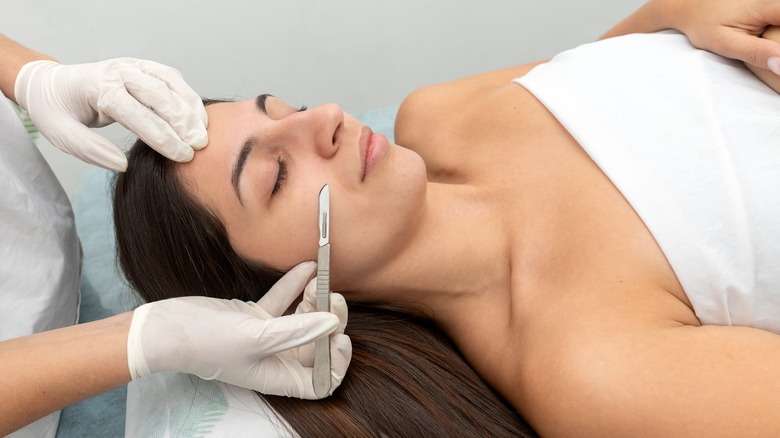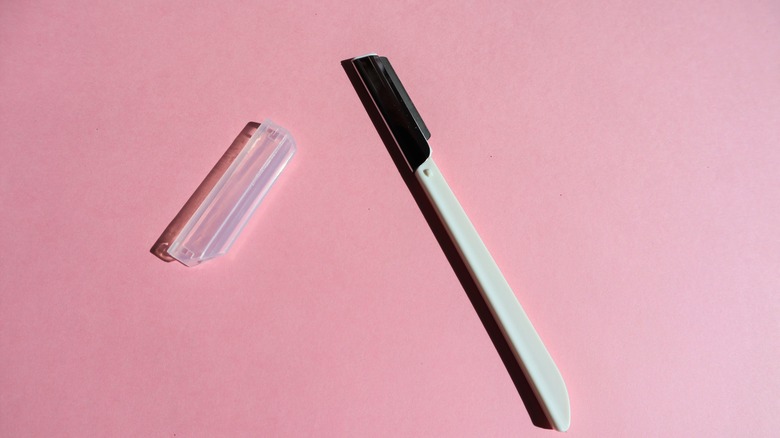What Are The Drawbacks Of Dermaplaning Your Face?
For many women and men, having smooth skin is the ultimate goal. However, it's not always something that can be achieved using a basic skincare routine. Some may need more intensive methods, like exfoliating, to remove dead skin cells (via Healthline). Exfoliation is a process where old and dead skin cell buildup is removed either by a chemical agent, such as peels, along with facial scrubs, creams with granular substances, or specific tools that are designed for dead cell removal.
However, while most forms of exfoliation can be effective for producing a smoother skin surface, other forms of exfoliation, such as microdermabrasion, will use an uneven textured tool and a vacuum to get rid of dead skin. Nowadays, one of the popular methods of exfoliation is dermaplaning (per Cosmopolitan). Unlike most other exfoliation treatments, dermaplaning not only removes dead skin cell buildup but also eliminates the fine, downy hair commonly referred to as peach fuzz.
What is dermaplaning?
Dermaplaning is done using a sharp, thin, scalpel-like blade to scrape dead skin cell buildup and hairs from the face, in small, short strokes. Usually touted as a painless procedure, dermaplaning promises to provide smooth, radiant skin with a light exfoliation (via Cosmopolitan). One of the desired benefits of dermaplaning is that makeup application is often easier, as the smoother skin surface allows the makeup to be applied more evenly. The experts at Lovoir Beauty explain that adding dermaplaning to your skincare can also potentially help to improve some skin conditions, such as fine lines and dark spots with continued and consistent appointments.
The procedure takes about 30 minutes to complete and in many cases, a numbing spray is applied prior to the procedure, Healthline explains. The treatment session is followed by the application of a soothing moisturizer or aloe gel to calm any irritation. However, side effects of dermaplaning include redness, some skin irritation, an increase in the development of whiteheads, and the appearance of patchy areas of skin where the procedure was performed.
While dermaplaning can be a good option for those looking for smoother and hairless facial skin, there are some additional downsides to consider.
Some factors to consider
One important thing to consider is that dermaplaning is typically a safe procedure for most individuals, however, there is a chance your skin may not respond positively to the procedure (via Cosmopolitan). If you're the type of person who experiences sensitivities to lotions, creams, soaps, and detergents, you may not be a good candidate for dermaplaning. Additionally, experiencing certain medical conditions, like rosacea, can also be a good reason to avoid the procedure altogether.
Another downside to dermaplaning is that while there are kits and tools available for those interested in the DIY route, it isn't recommended. The potential for complications and injury is increased when dermaplaning is attempted at home (via Healthline). Additionally, while rare, there is also a chance for infection when undergoing a dermaplaning procedure either at home or with a professional.
Like many cosmetic procedures, the overall results of dermaplaning are not permanent, adding yet another drawback to the procedure. The hair and dead skin cells will build back up, requiring you to receive repeated treatments for longer-term results (via Lovoir Beauty).



